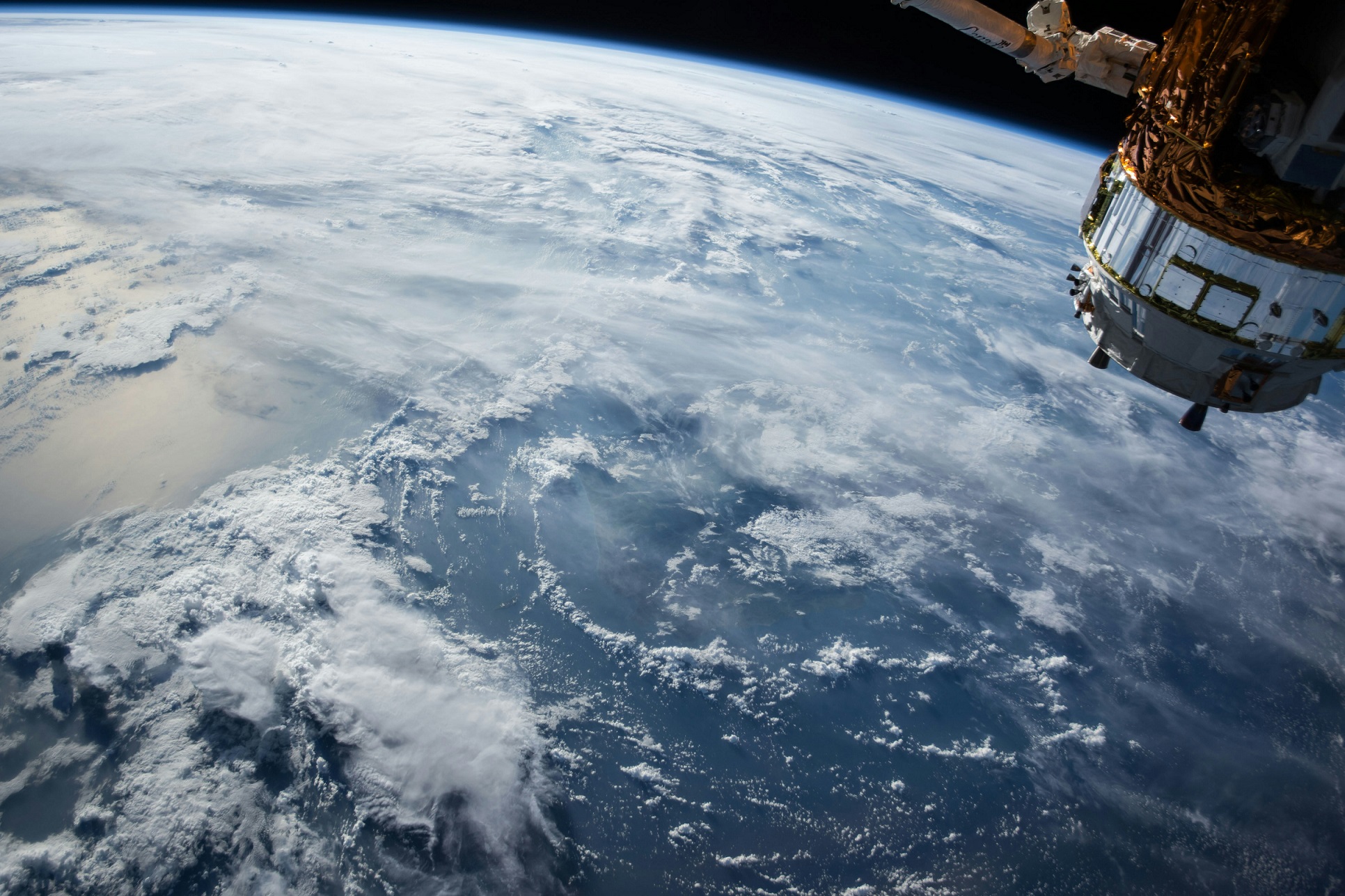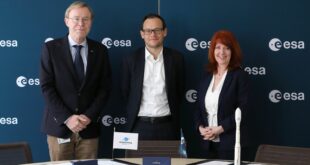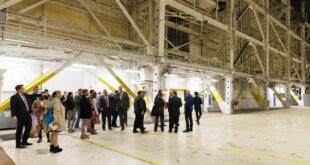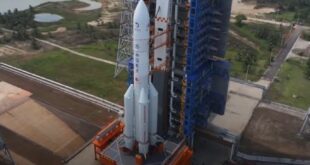By Alexey Shirobokov, Alex Pospekhov

In the last decade, space weather has become the subject of serious consideration in the scientific community and global scientific organizations. Solar activity plays an important role in both space operations and terrestrial infrastructure. Flares, storms, and coronal mass ejections are all manifestations of solar activity that can affect the operation of satellites, navigation, surveillance, radio communications, and other important structures. As a consequence, there is a need for a reliable and independent ecosystem for monitoring and forecasting solar weather. Today, the European space sector faces the challenge of creating infrastructure capable of competing with existing international initiatives.
Policy for Space Autonomy
Since the creation of the European Space Agency (ESA) in 1975, its main goal has been to unite the EU space industry to ensure the goals of national sovereignty in space.
However, some areas have not been receiving enough resources for independent development. As a result, certain niches in the European space sector have become dependent on suppliers (or solutions) from the United States and, until recently, Russia.
To this date, the mainstream of data on solar activity comes from large international spacecraft launched by NASA and other global agencies. ESA cooperates closely with them and develops joint projects. For example, the SOHO spacecraft (Solar and Heliospheric Observatory) is a joint mission of Europe and the United States: 9 of the 12 spacecraft instruments were developed by European scientists, and 3 by American teams. NASA is responsible for the launch, as well as for tracking, telemetry reception, and commanding. Another example of a joint mission is Solar Orbiter. This is a satellite whose main purpose is to study the Sun in extremely close conditions. The European Space Agency and NASA work in a powerful tandem that provides Europe with a significant amount of information, but at the same time makes it dependent on external suppliers.
Currently, the EU acknowledges its excessive reliance on third-party expertise and it is ready to leave the old passive approach behind.
Why does Europe need independent infrastructure to monitor solar weather?
Firstly, solar weather monitoring is an integral part of the security and overall performance of space programs as well as the functioning of the Earth’s infrastructure. A large amount of up-to-date and high-quality space weather data makes it possible to predict detrimental phenomena to prevent threats and protect key facilities promptly.
For example, geomagnetic storms arising from solar activity can affect the performance of financial systems that depend on the date from the GPS signal. This can lead to delays in payment processing, breaks in credit card functioning, and other problems, including fluctuations in stock markets.
Unlike Earth weather, space weather has no specific locality.
A series of solar storms in 1972 drew attention to several serious threats that such phenomena can produce. One of them is an increase in levels of radiation, which endangers astronauts and spacecraft. On top of that, the same solar storms triggered the detonation of dozens of sea mines south of Hai Phong in North Vietnam and led to widespread disruptions to power grids and communication systems in North America.
One of the recent cases of space weather outbreaks is an incident in 2022 when SpaceX lost 38 new Starlink satellites due to an electromagnetic storm. This resulted in financial losses of $100 million for the company. The incident also led SpaceX to launch an additional production cycle, which increased the negative impact on the environment. The reason for the incident was the lack of information about space weather and incorrect calculations of the ionospheric resistance for satellites.
Secondly, there are risks associated with required access to third-party information or services. Any of these services may introduce a paywall at any moment. This will disrupt the established service chains and affect various industries, from navigation and transport to finance and communication. In one of such scenarios, Europe will have to pay for GPS and access to geophysical data. Fortunately, the EU already has experience in solving such problems — the Galileo navigation system was developed as an alternative to the American GPS. Therefore, Europe has to be prepared to increase its efforts in developing its capabilities.
In addition, independent infrastructure for solar weather monitoring will allow Europe to strengthen its diplomatic standing in the world. Having its resources, it will be able to offer services and expertise to other countries and reinforce international partnerships.
Creating independent infrastructure in Europe
Europe’s desire for technological sovereignty is becoming more and more obvious. To successfully implement the strategy of autonomous space structures, it is necessary to take several important steps, including:
- Building backup measures. Most of the data regarding the extra-terrestrial environment, solar and space weather in general, as well as the state of the Sun, comes from powerful scientific or meteorological instruments. Their launch and maintenance require significant time and financial resources. Almost all of the solar monitoring missions exceed their service life and continue to operate without replacements. If they start to fail, humanity will risk losing up to 95% of the data on cosmic radiation. Therefore, it is necessary to have a backup solution.
As an alternative to large spacecraft, which are used to obtain information about the solar weather, there is a possibility of launching groups of small satellites into low orbit. This will allow the surveillance system to be deployed quickly and at a relatively low cost while ensuring continuous collection of data.
- Creating a single data lake. Today, space weather data is scattered across various sources among hundreds of different scientific groups. To use data efficiently, one would need a centralized repository that will aggregate a large amount of information from different resources. This approach will help turn solar weather monitoring into a process similar to ordinary weather forecasting, where a huge amount of data from many observation points allows for big data analysis.
Europe has to be prepared to increase its efforts in developing its capabilities.
This goal can be achieved with the use of artificial intelligence and machine learning models. This will automate the processes of collecting, storing, and processing space weather data and provide reliable and high-quality analytical data.
- Establishing cooperation between the public and the private sector. One of the problems that the European space industry is facing today is insufficient financing. A partnership between the state and private businesses can help with the solution. Government agencies have the necessary resources and expertise in the field of solar weather, while private companies can introduce innovative technologies and solutions. Such a partnership would optimize the application of the available budget, redistribute risks, and accelerate industry development.
- Creating a single strategic center. There is still no unified European regulation for space weather. The lack of a common strategy in the field makes coordination of efforts and exchange of information difficult. The EU needs a center that will contribute to the continuous development of integrated solutions.
Such a strategic hub may be established in Luxembourg. In 2018, the Grand Duchy launched its space agency with a similar goal — to stimulate innovation and cooperation between industry actors. Luxembourg has already built infrastructure that includes supercomputers, data centers, and other technological capabilities while continuing to develop its data economy.
Luxembourg also has a well-developed space field and stimulates the development of new companies as well as research in the area of space weather.
The creation of an independent ecosystem for solar monitoring is an important step for Europe in the process of developing its scientific and technological capabilities. However, it is equally important to establish and maintain the procedure for international data exchange. Unlike Earth weather, space weather has no specific locality. Evaluating space weather in its entirety requires global monitoring and the exchange of data between multiple sources. This is the only approach that will allow us to get a comprehensive understanding of space weather and take effective measures in the space field.

Alexey Shirobokov — serial tech entrepreneur, angel investor, and cofounder at Mission Space (a space weather data & analytic company based in Luxembourg). The company is a full member of the oldest and the most important space bodies International Astronautical Federation, and many other scientific and space industrial communities.

Alex Pospekhov — serial tech entrepreneur and startup mentor with over 18 years of experience in the tech business. Alex is the cofounder at Mission Space. Columnist and speaker at Forbes, Silicon Luxembourg, Delano, Sifted, SpaceTech Gulf, and numerous conferences and events.





